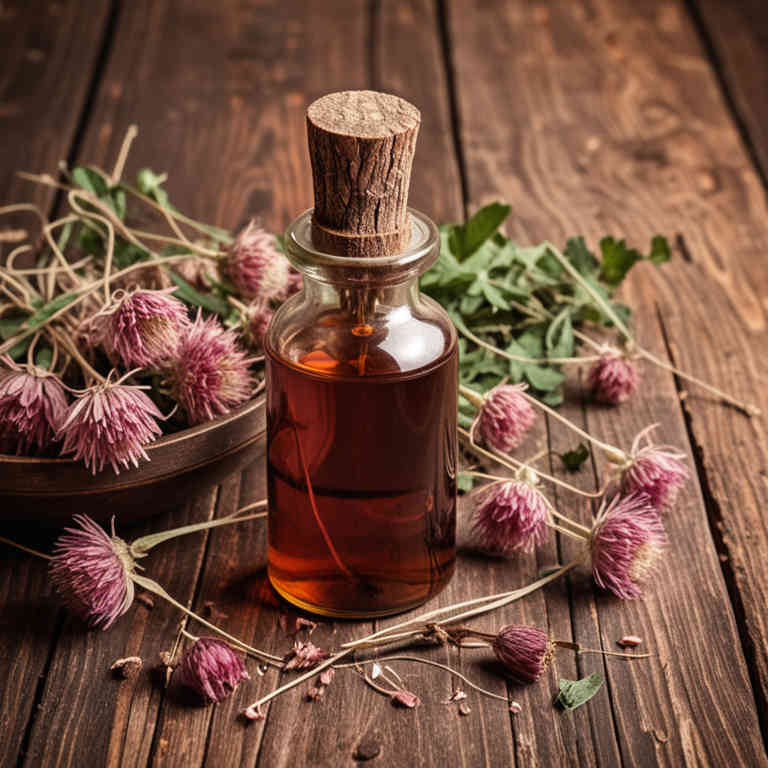Trifolium pratense tincture for medicinal use

Trifolium pratense tincture is a concentrated herbal preparation made from red clover, which is harvested and steeped in alcohol to extract its active compounds.
This tincture is commonly used in herbalism to support respiratory health, alleviate menopausal symptoms, and promote skin health due to its high content of isoflavones and other phytoestrogens. It is often taken orally in small doses to harness its anti-inflammatory and antioxidant properties. Red clover tincture is also used externally to treat skin conditions and as a natural remedy for hormonal imbalances.
Its versatility makes it a popular choice in both traditional and modern herbal practices.
Uses
Trifolium pratense tincture has been used to support cardiovascular health, reduce inflammation, and alleviate symptoms of anxiety and depression.
Historically, it was valued in ancient herbal medicine for its purported ability to strengthen the heart and improve circulation. Traditional uses also included treating wounds, reducing fever, and supporting digestive health. In modern times, it is often used as a natural remedy for conditions such as hypertension, menopause symptoms, and mild depressive states.
Scientific research continues to explore its potential benefits, though more studies are needed to fully confirm its efficacy.
Benefits
Trifolium pratense tincture has health benefits such as supporting cardiovascular health, reducing inflammation, and enhancing immune function.
It is derived from red clover, which is rich in isoflavones and other phytoestrogens that may help balance hormone levels. This preparation is often used to alleviate menopausal symptoms and improve skin health due to its antioxidant properties. Additionally, it may aid in respiratory health by acting as a natural expectorant.
Its mild and soothing nature makes it a popular choice for those seeking natural remedies for various wellness concerns.
Constituents
Trifolium pratense tincture active constituents include flavonoids, such as quercetin and kaempferol, as well as polyphenols, tannins, and vitamin C. These compounds contribute to its antioxidant and anti-inflammatory properties.
The flavonoids help neutralize free radicals, supporting cellular health and reducing oxidative stress. Tannins may aid in digestive health by strengthening mucous membranes and reducing inflammation.
This tincture is commonly used to support cardiovascular health, alleviate menopausal symptoms, and promote overall wellness.
Preparation
To make Trifolium pratense tincture, first gather fresh or dried red clover (Trifolium pratense) and ensure it is free from pesticides or contaminants.
Next, in a clean glass jar, layer the clover with a high-proof alcohol such as vodka or ethanol, making sure the plant material is fully submerged. Seal the jar tightly and store it in a dark, cool place, shaking it gently every few days for four to six weeks. After the infusion period, strain the liquid through a fine mesh or cheesecloth to remove the plant matter.
Finally, store the tincture in a dark glass bottle away from light and heat to preserve its potency.
Side Effects
Trifolium pratense tincture may lead to gastrointestinal discomfort, allergic reactions, or interactions with medications.
It is made from red clover, which contains isoflavones and other compounds that may have estrogen-like effects. Possible side effects include nausea, bloating, and in some cases, hormonal imbalances. Individuals with hormone-sensitive conditions should use it with caution.
It is important to consult a healthcare professional before use, especially for prolonged periods or in high doses.